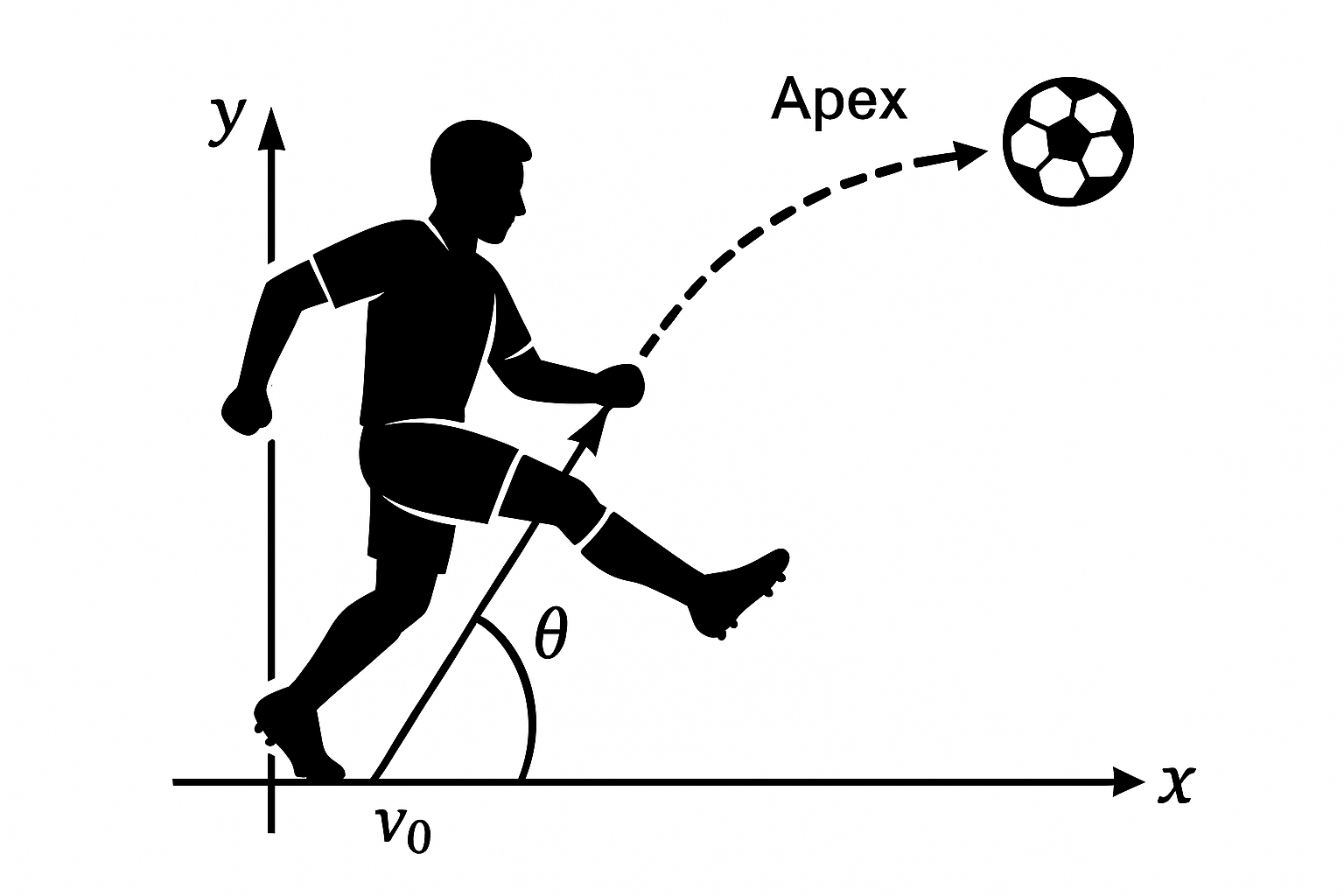🔹 Topic: Oblique Projectile Motion | MCQs: 10 🔹
Solve these MCQs on Oblique Projectile Motion sincerely before checking the solutions.
Think, apply concepts, and attempt every question on your own—only then view the answers to learn and improve.
Each question you solve brings you closer to your NEET/JEE success!
Q1. In projectile motion, the horizontal range is maximum when the angle of projection is:
(a) 30°
(b) 45°
(c) 60°
(d) 90°
Correct Answer: (b) 45°
The horizontal range \( R = \frac{u^2 \sin 2\theta}{g} \) is maximum when \( \sin 2\theta = 1 \), which occurs at \( \theta = 45° \).
Q2. The time of flight of a projectile depends on:
(a) Horizontal velocity only
(b) Vertical velocity only
(c) Both horizontal and vertical velocity
(d) Acceleration due to gravity only
Correct Answer: (b) Vertical velocity only
The time of flight \( T = \frac{2u \sin \theta}{g} \) depends only on the vertical component of velocity.
Q3. At the highest point of a projectile's trajectory, the:
(a) Velocity is zero
(b) Acceleration is zero
(c) Kinetic energy is minimum
(d) Potential energy is minimum
Correct Answer: (c) Kinetic energy is minimum
At the highest point, the vertical velocity becomes zero but horizontal velocity remains, making kinetic energy minimum (but not zero).
Q4. The horizontal range of a projectile is equal to its maximum height when the angle of projection is:
(a) 30°
(b) 45°
(c) 60°
(d) 76°
Correct Answer: (d) 76°
When \( R = H \), we have \( \frac{u^2 \sin 2\theta}{g} = \frac{u^2 \sin^2 \theta}{2g} \). Solving gives \( \tan \theta = 4 \) or \( \theta \approx 76° \).
Q5. For a projectile, the ratio of maximum height to horizontal range when θ = 45° is:
(a) 1:1
(b) 1:2
(c) 1:4
(d) 2:1
Correct Answer: (c) 1:4
At \( \theta = 45° \), \( H = \frac{u^2 \sin^2 45°}{2g} = \frac{u^2}{4g} \) and \( R = \frac{u^2 \sin 90°}{g} = \frac{u^2}{g} \). Thus \( H/R = 1/4 \).
Q6. The path of a projectile is a:
(a) Straight line
(b) Circle
(c) Parabola
(d) Hyperbola
Correct Answer: (c) Parabola
Under uniform gravity and no air resistance, the trajectory follows a parabolic path described by \( y = x \tan \theta - \frac{gx^2}{2u^2 \cos^2 \theta} \).
Q7. If the initial speed of a projectile is doubled, its maximum height becomes:
(a) 2 times
(b) 4 times
(c) 8 times
(d) Remains same
Correct Answer: (b) 4 times
Since maximum height \( H \propto u^2 \), doubling the initial speed \( u \) makes \( H \) increase by a factor of 4.
Q8. Two projectiles are fired at angles 30° and 60° with the same speed. Their horizontal ranges are:
(a) Different
(b) Same
(c) Depends on mass
(d) None of these
Correct Answer: (b) Same
The range \( R = \frac{u^2 \sin 2\theta}{g} \) is the same for complementary angles (θ and 90°-θ) when projected with the same speed.
Q9. The maximum height attained by a projectile is half its horizontal range. The angle of projection is:
(a) 30°
(b) 45°
(c) 60°
(d) 90°
Correct Answer: (a) 30°
When \( H = R/2 \), we get \( \frac{u^2 \sin^2 \theta}{2g} = \frac{1}{2} \times \frac{u^2 \sin 2\theta}{g} \). Simplifying gives \( \tan \theta = 1/2 \) or \( \theta \approx 26.6° \). (Note: The closest option is 30°)
Q10. A projectile is fired at an angle θ with speed u. The time taken to reach the highest point is:
(a) \( \frac{u \sin \theta}{g} \)
(b) \( \frac{u \cos \theta}{g} \)
(c) \( \frac{2u \sin \theta}{g} \)
(d) \( \frac{u}{g} \)
Correct Answer: (a) \( \frac{u \sin \theta}{g} \)
The time to reach maximum height depends only on the vertical component: \( t = \frac{u \sin \theta}{g} \).
Oblique Projectile Motion, Oblique Projectile Motion, Oblique Projectile Motion, Oblique Projectile Motion, Oblique Projectile Motion, Oblique Projectile Motion, Oblique Projectile Motion, Oblique Projectile Motion,

